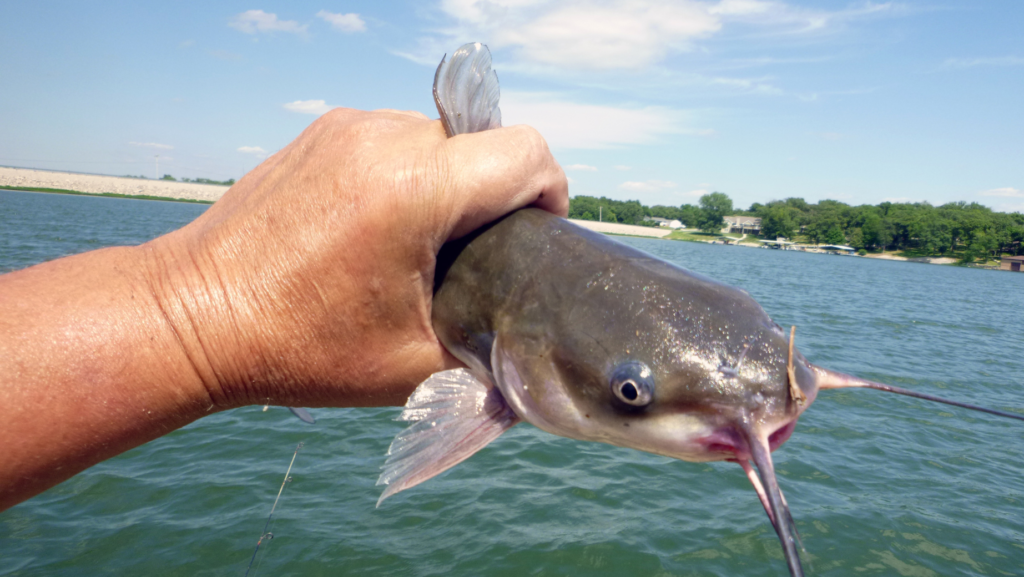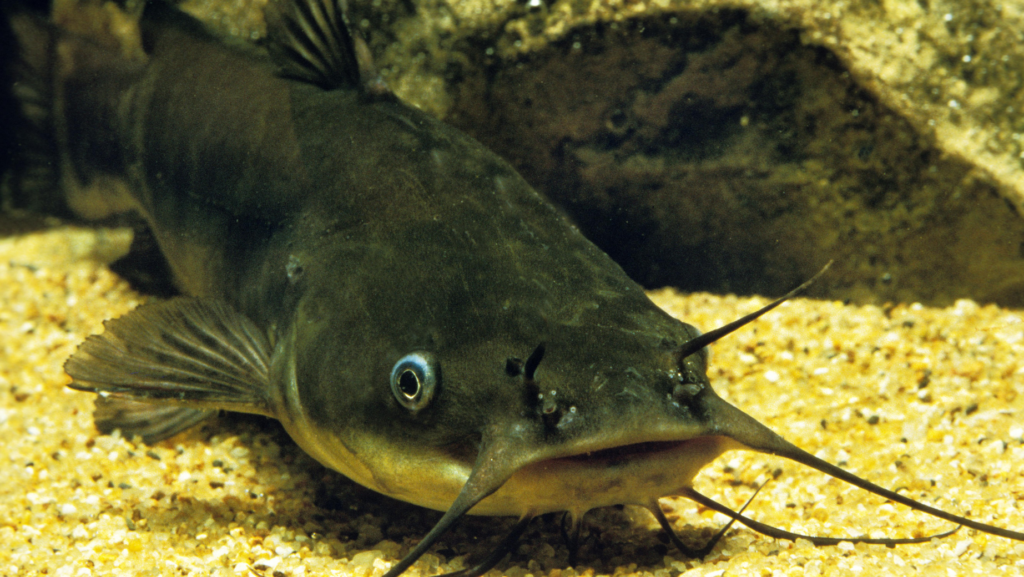The blue catfish (Ictalurus furcatus) is a large species of North American catfish, reaching a length of 65 in (170 cm) and a weight of 165 lb (75 kg).
Birth: The Pint-sized Beginnings

The journey of the Blue Catfish (Ictalurus furcatus) begins with the humble hatching of its eggs. In the early stages of life, Blue Catfish are minuscule, measuring only a few millimeters in length. These tiny fry hatch from adhesive eggs laid in a concealed nest, typically in cavities or depressions in underwater structures.
Grownup Life: The Transformation
As the Blue Catfish matures, it undergoes a remarkable transformation. From the vulnerable fry, it evolves into a robust and predatory fish. The growth process involves developing the iconic forked tail, a defining feature of the species. Blue Catfish are known for their striking blue-gray coloring on the dorsal side, accompanied by a lighter underside.

Blue catfish Food: A Predatory Palette
The Blue Catfish is an opportunistic predator with a diverse palate. In its grownup life, it exhibits a voracious appetite, feeding on various aquatic organisms. Their diet includes fish, crustaceans, and other smaller aquatic creatures. As apex predators, Blue Catfish play a crucial role in maintaining the balance of aquatic ecosystems by controlling populations of smaller species.
Blue catfish Habitat: Rivers, Reservoirs, and Beyond
Blue Catfish are highly adaptable and can thrive in a range of aquatic environments. They are commonly found in large rivers, reservoirs, and lakes, preferring deep and slow-moving waters. Their ability to navigate diverse habitats contributes to their widespread distribution in freshwater ecosystems across North America.
Reproduction: Nest Builders and Parental Guardians

During the reproductive season, Blue Catfish engage in an intriguing courtship ritual. Males select and prepare nesting sites in submerged structures, where females deposit adhesive eggs. Once laid, males guard the nest vigilantly, protecting the eggs until they hatch. The parental care displayed by male Blue Catfish sets them apart from some other fish species.
Death: Natural Life Cycle Conclusion
While Blue Catfish can live for several decades, they, like all living organisms, face the inevitability of death. Factors such as predation, disease, and environmental conditions contribute to the natural mortality of Blue Catfish. However, their life cycle is essential to the ecological balance of aquatic ecosystems, providing sustenance for other species and contributing to the overall health of freshwater environments.
Conservation Considerations

Understanding the complete lifecycle of Blue Catfish is crucial for effective conservation strategies. Human activities, such as overfishing and habitat degradation, can impact their populations. Sustainable fisheries management and habitat preservation efforts play a vital role in ensuring the continued existence of Blue Catfish and maintaining the health of aquatic ecosystems.
In the grand tapestry of aquatic life, the Blue Catfish weaves a story of adaptation, predation, reproduction, and the cyclical nature of existence. Their lifecycle is a testament to the intricate balance within freshwater ecosystems, reminding us of the interconnectedness of all living beings in the vast aquatic realms they call home.

